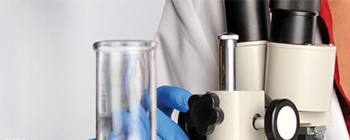Learn More
Invitrogen™ Dextran, Fluorescein, 500,000 MW, Anionic, Lysine Fixable 
Rigorous methods for removing as much unconjugated dye as practical, followed by assay of dextran conjugates by thin-layer chromatography to help ensure absence of low molecular weight contaminants
Supplier: Invitrogen™ D7136
Description
Labeled dextrans are hydrophilic polysaccharides most commonly used in microscopy studies to monitor cell division, track the movement of live cells, and to report the hydrodynamic properties of the cytoplasmic matrix. The labeled dextran is commonly introduced into the cells via microinjection. Dextrans are hydrophilic polysaccharides characterized by their moderate-to-high molecular weight, good water solubility, and low toxicity. They also generally exhibit low immunogeniticy. Dextrans are biologically inert due to their uncommon poly-(α-D-1,6-glucose) linkages, which render them resistant to cleavage by most endogenous cellular glycosidases.
- Label (Ex/Em): Fluorescein (494/521)
- Size: 500,000 MW
- Charge: Anionic
- Fixable: Fixable via Lysine
- Succinimidyl coupling of dyes to dextran molecule, which, in most cases, results in neutral or anionic dextran
- Reaction used to produce Rhodamine Green™ and Alexa Fluor™ 488 dextrans results in final product being neutral, anionic, or cationic
- Common uses include neuronal tracing (anterograde and retrograde) in live cells
- Cell lineage tracing in live cells
- Neuroanatomical tracing
- Examines intercellular communications (e.g., in gap junctions, during wound healing, and during embryonic development)
- Investigates vascular permeability and blood-brain barrier integrity
- Tracks endocytosis
- Monitors acidification (some dextran-dye conjugates are pH-sensitive)
- Studies hydrodynamic properties of cytoplasmic matrix
Fluorescein dextrans are intrinsically anionic, whereas most of dextrans labeled with the zwitterionic rhodamine B, tetramethylrhodamine, and Texas Red™ dyes are essentially neutral
To produce more highly anionic dextrans, proprietary procedure adds negatively charged groups to dextran carriers; these products are designated polyanionic dextrans
Some applications require that dextran tracer be treated with formaldehyde or glutaraldehyde for subsequent analysis: For these applications, lysine-fixable dextran conjugates of fluorophores or biotin
Dextrans have covalently bound lysine residues that permit dextran tracers to be conjugated to surrounding biomolecules by aldehyde-mediated fixation for subsequent detection by immunohistochemical and ultrastructural techniques
Cell Analysis, Cell Tracing and Tracking, General Cell Tracing, Neuronal Tracing
Order Info
Shipping Condition: Room temperature
Specifications
| Dextran | |
| Store in freezer (-5 to -30°C) and protect from light. | |
| Room Temperature | |
| Invitrogen™ |
| 10 mg | |
| Classic Dyes | |
| 494/518 nm |
For Research Use Only. Not for use in diagnostic procedures.



